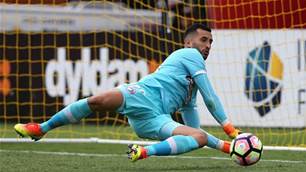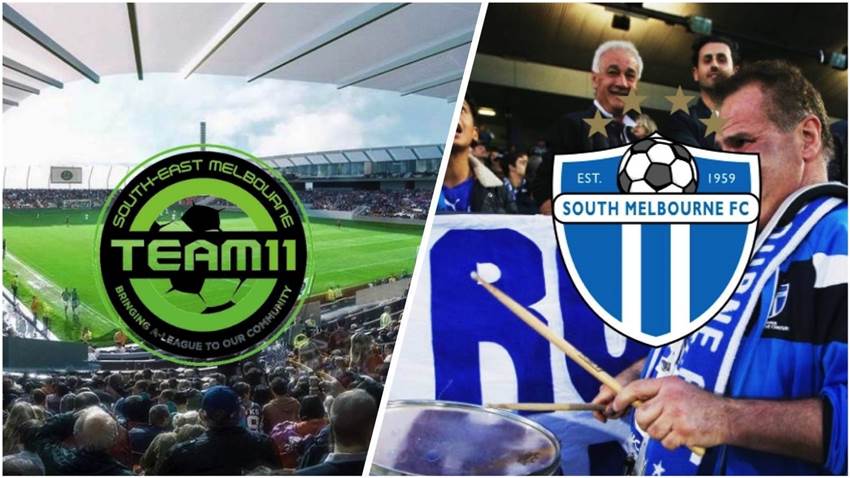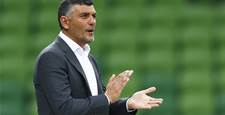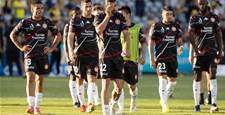Can what unites us also divide us? Prominent expansion bids Team 11 and South Melbourne couldn’t be more different, and yet also, more alike.
If a group of passionate local councillors and a former Herald Sun journalist teaming up to form an A-League super-club sounds like a shonky TV plotline, it’s because in some ways it is. The bid started with no name, stadium, business or football experience, just an ambitious plan to bring the world game to cosmopolitan south-east Victoria.
But what began as a pipedream has quickly become a frontrunner among the six remaining bids for two A-League licences, garnering broad support for what the public dares to dream could be another Western Sydney Wanderers.

Windley’s the first to admit that it’s “quite a bizarre” situation, as he says: “Councils are definitely not in the business of running and creating professional sporting clubs.”
But surprisingly, none of this appears to faze the journalist who gave up a career at Australia’s biggest newspaper to grasp the optimistic role.
Perhaps it’s that with FFA governance in turmoil and great uncertainty surrounding the sport’s future, Team 11’s unlikely journey doesn’t seem that strange for Australian football.
“Hopefully other business, football-minded people see the common sense in it, then when the councillors hand over the keys, the right people are in it for the right reasons,” Windley says.
“Even though the majority of Victoria’s population live in the south east or the west, we all have to come to the city to watch our sport.”
Windley isn’t just talking as a spokesman; his daughter is a Melbourne Victory member and he regularly makes this trip himself.
“A lot of people find it so hard to get to games nowadays, especially late matches when you’ve got kids,” he continues. “I live a good 45km out of the city and it took me an hour and a half to get to one of the last games.
“If I parked my car at Narre Warren station, I’d be at Team 11’s prospective ground in 10 minutes. Why can’t we stay in our own backyard?
“Football has a massive opportunity to make a difference in this part of Victoria and claim this region like it’s never been claimed before. Only this sport and this league can do that right now.”
Windley’s enthusiasm is infectious. He cares about the future of his community and the cost of petrol for parents taking their kids to football practice.
In many ways Team 11’s bid is propelled by emotion and community – there are continuing question marks over its lack of stadium funding and its financial capability to run an A-League, W-League and Youth League side.
Even if the state government secures $170 million in funding, Dandenong Stadium is likely to take at least two seasons to build.
This leaves the club playing at Casey Fields, a 350 seater VFL oval, for its crucial formation period. Meanwhile, their major Victorian rivals, South Melbourne, have a ready-to-go 7,400 seater stadium, thousands of pre-existing fans and half-a-century of history.
“We have a clear financial advantage over every other expansion candidate,” Papastergiadis says. “We are a ready-made club, we’re not a club that says we’re aiming to do this. We can do it now.”
In a sporting market that’s more sopping than saturated, there’s little room for both. Melbourne City have already struggled to create a consistent atmosphere at AAMI Park. It’s a mantra that’s been echoed by A-League chief Greg O’Rourke, who all but ruled out the possibility of both Victorian sides gaining entrance in this expansion period to the Sydney Morning Herald.
“There's geographies of Australia that are not connected yet to the A-League and the teams that we would propose to put forward would enable that connection of that geography,” he added.
But how can anyone decide which Australian football needs more right now?
Windley won’t let that get him down. Team 11 was never just a career opportunity – it’s a chance at a better life.
“There are communities out here that don’t even know the A-League exists, yet they’re passionate football supporters,” Windley says. “They’d get behind something that’s local to them in a heartbeat.
“I’m yet to have a negative conversation with a local club or community group. Every local club needs to feel like they’re part of us from the start and as soon as I get 10 minutes with someone, they’re sold.
“I’m a glass half-full kind of person, I think people will be able to cop two years of playing at Casey Fields,” he insists. “If we get the numbers right I believe we can be a super club in the A-League. I really do.”
South Melbourne bid spokesman, Bill Papastergiadis, is a little more doubtful.
“Let’s be frank, to build a 20,000 seater stadium will cost between $350-400 million,” he says. “That’s a significant cost for 10-12 home games. The business case for that will really need to be understood because it also takes decades to build that level of passion and support.
“Dandenong isn’t preferable at this stage of the A-League, every sporting club that has moved games to the Dandenong area, like St. Kilda in the AFL, have quickly retreated.
“They’ve found that their members, supporters and players aren’t interested in moving there. Proximity to infrastructure and other forms of entertainment and services are key drivers.
“We’re going to be aiming for 8-10,000 people per match. We were averaging 8,000 per game in 2001 so we think that’s well within our gap.

“There’s a huge debate over what do you need to have a successful ambience and we’ve seen that A-League matches played in empty stadium kills viewer interest.
“Tight, packed stadiums is the successful model. We watched Leganes and Real Madrid play in a 13,000 stadium when we toured Spain and my motto is if it’s good enough for La Liga, it’s good enough for Australian football.”
While South Melbourne only require a fraction of their stadium’s capacity to break even, forming Team 11 was a significant risk for three councils (Casey, Greater Dandenong and Cardinia Shire) with substantial economic challenges.
They’ve already spent hundreds of thousands of ratepayer dollars on setting up the bid with no surety of success.
And with many existing A-League clubs unable to turn a profit, despite Team 11 securing private investors, the council’s outpouring might not end there.
“The councils have made contact with 100 different grassroots football clubs that are going to form our supporter base,” Memeti says. “Hopefully our kids will be able to dream about playing for this team – we’re trying to give our community an aspiration.
“A-League clubs usually lose between $1-2 million a year, but we think we’re able to cover those losses through sponsorships.
“Dandenong is where the future is. It’s the heartland of football and there are no sports like it here, we’ll be another Western Sydney Wanderers. Where’s South Melbourne’s growth going to come from?”
Related Articles
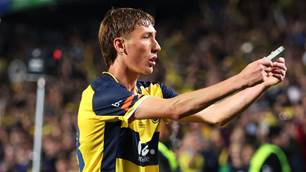
Socceroo-in-waiting seals Championship deal

Fringe Socceroo swerves A-League to remain in Europe after Fulham exit
